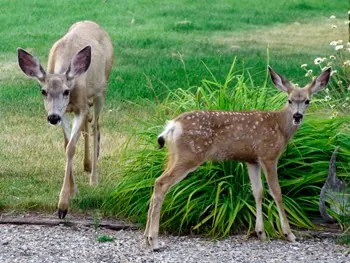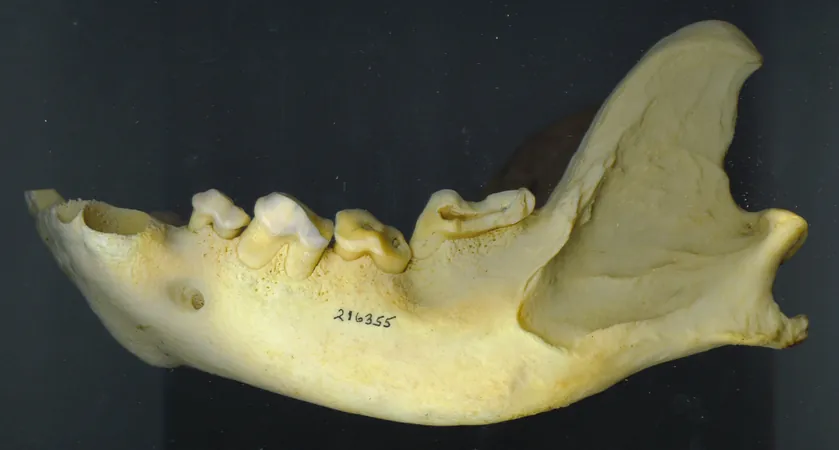
Alarming Rise: Third Case of Chronic Wasting Disease Confirmed Near Cranbrook!
2024-11-22
Author: Benjamin
In a concerning development, the British Columbia government has confirmed a third case of chronic wasting disease (CWD) discovered in a white-tailed deer located just outside Cranbrook. The latest sample, taken in October, lies within a mere two kilometers of previous cases, prompting urgent attention from wildlife officials.
The Canadian Food Inspection Agency verified this alarming report on Wednesday, November 20, raising significant concern in an area already facing heightened scrutiny due to previous detections. This surge in cases has all been concentrated in the regions south of Cranbrook, spotlighting the vulnerability of local wildlife to this fatal illness.
CWD is a contagious neurodegenerative disorder that affects members of the cervid family, including deer, elk, moose, and caribou. While there is currently no conclusive evidence that CWD can be transmitted to humans, both Health Canada and the World Health Organization strongly advise against consuming meat or any parts of an infected animal.
Local authorities have emphasized that these cases are clustered within a designated CWD management zone that encompasses 14 wildlife management units in the Kootenay region. The B.C. government has committed to ongoing research and data collection in response to this public health concern, with a focus on controlling the spread of CWD.
“Continued vigilance, preventative measures, and meticulous monitoring are imperative to safeguard cervid populations and support communities reliant on them,” stated a government spokesperson. To combat this looming crisis, mandatory testing for deer harvested in specific management units—4-1 to 4-8 and 4-20 to 4-25, which cover regions east of Trail, south of Nelson, and parts of the Creston Valley—has been instituted.
Hunters are now required to adhere to restrictions when transporting carcasses. It is crucial that all spinal and neck materials be removed before transportation. "If a hunter harvests a deer, elk, or moose within the CWD management zone, they are prohibited from taking any part of the brain tissue or spinal column out of the area,” explains Provincial Wildlife Health Biologist Cait Nelson.
To curb the spread of the disease, hunters are encouraged to leave as much of the carcass as possible at the harvesting location. This practice is vital for preventing CWD from migrating to new regions. According to Nelson, hunters play a crucial role in the state's ability to monitor and manage CWD effectively. “Hunting serves as an essential tool for collecting samples and assessing the health of our wildlife populations,” she noted.
CWD symptoms can be elusive, often taking years to manifest, so vigilance is paramount. Hunters and the public are urged to report any sightings of deer, elk, moose, or caribou displaying symptoms such as drastic weight loss, excessive drooling, poor coordination, stumbling, or unusual behavior to the RAPP Line at 1-877-952-7277 or the B.C. Wildlife Health Program.
The continued rise in chronic wasting disease cases is raising eyebrows and concerns among local communities. Will this continue to remain an unchecked threat to both wildlife and human health? Stay tuned for more updates as the situation unfolds!









 Brasil (PT)
Brasil (PT)
 Canada (EN)
Canada (EN)
 Chile (ES)
Chile (ES)
 España (ES)
España (ES)
 France (FR)
France (FR)
 Hong Kong (EN)
Hong Kong (EN)
 Italia (IT)
Italia (IT)
 日本 (JA)
日本 (JA)
 Magyarország (HU)
Magyarország (HU)
 Norge (NO)
Norge (NO)
 Polska (PL)
Polska (PL)
 Schweiz (DE)
Schweiz (DE)
 Singapore (EN)
Singapore (EN)
 Sverige (SV)
Sverige (SV)
 Suomi (FI)
Suomi (FI)
 Türkiye (TR)
Türkiye (TR)